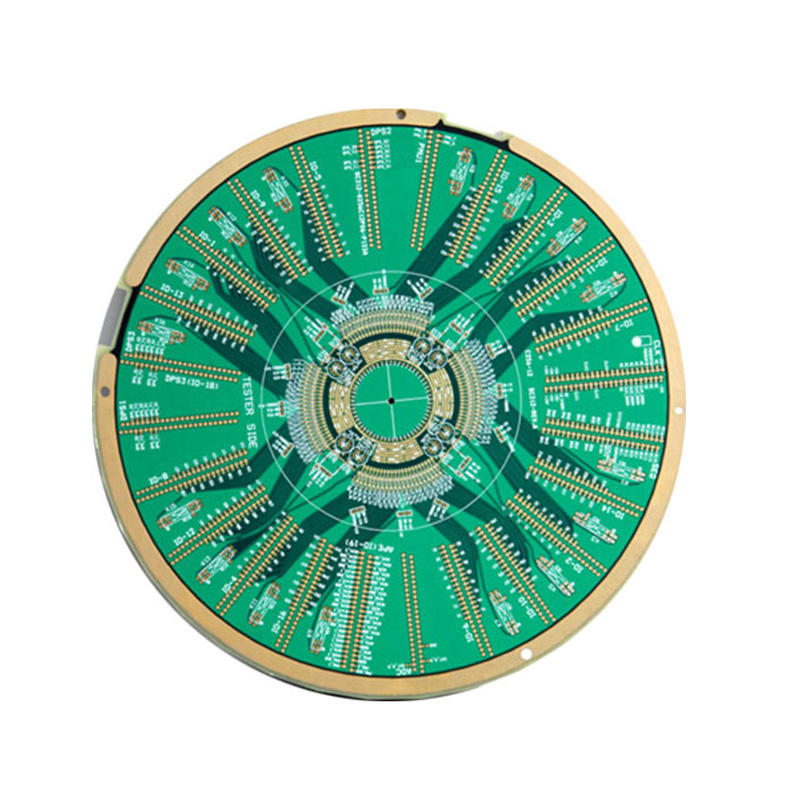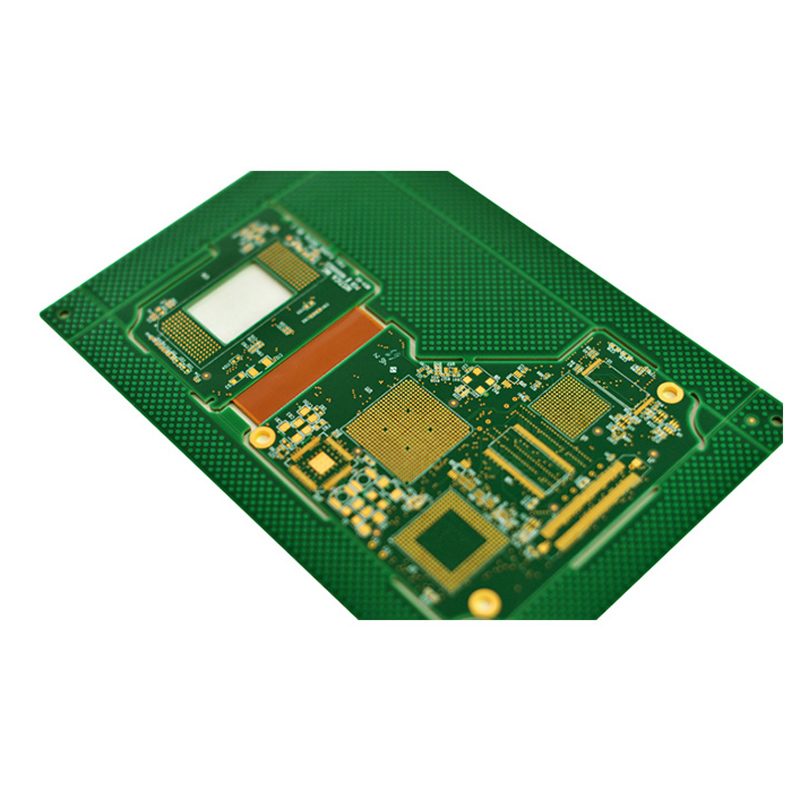


CCTV Camera Rigid Flex PCB circuit board Design
Name : Camera Rigid Flex PCB Cost
Layer count : 6 Layer PCB
Board thickness : 0.9 mm
Copper thickness :1 oz
Fr4 Material: IT180A + AK
Application: Vehicular HD camera
Feature: Rigid-flexible
Closed-circuit television (CCTV) cameras used for video surveillance rely on small, lightweight printed circuit boards (PCBs) to host the image sensor, processor, and interconnect components. Rigid-flex PCB technology is well-suited for integrating the high density functions within the tight space constraints of camera modules.
This article provides an overview of key design considerations for rigid-flex PCBs used in CCTV cameras. We will focus on the layout, materials selection, stackup, and fabrication factors required to ensure reliable performance under mechanical and electrical stresses.
CCTV Camera System Overview
CCTV cameras capture video using a lens that transmits images onto a photosensitive image sensor. Key components include:
Image Sensor – CMOS or CCD sensor that converts light into electrical signals
Lens – Focuses scene onto image sensor; types include fixed, vari-focal, P-iris
Image Processor – Chip processes sensor data into video output format
Flexible PCB – Interconnects sensor to processor board
Memory – Buffers video data before transmission
Power Supply – Provides regulated voltages to components
These subsystems are packaged into compact camera modules rugged enough for harsh environments.
Benefits of Rigid-Flex PCBs for CCTV Cameras
Rigid-flex PCBs provide several benefits for CCTV camera applications:
Compact integration – Interconnect various rigid PCB assemblies flexibly
Layer flexibility – Optimize trace routing using multiple rigid/flex layers
3D configuration – Route traces on multiple axes efficiently
Reliability – Withstand vibration/shock without solder cracks
Serviceability – Allow disassembly to service/replace modules
Signal integrity – Carefully match impedances for video signals
High speed support – Facilitate fast data interfaces like MIPI
Thermal dissipation – Sink heat using thermally conductive rigid sections
Rigid-flex integration enables packaging innovations not possible with rigid PCBs alone.
CCTV Camera Rigid-Flex PCB Design Considerations
Here are some of the major design aspects and challenges for rigid-flex PCBs used in CCTV cameras:
Electrical Interface Planning
Sensor selection influences resolution, pixel formats, and data rates
Processor determines video compression methods used
Memory capacities depend on video buffering needs
High speed serial interfaces like MIPI CSI-2 require impedance control
Routing Complexity
Route sensor inputs to processor via flexible layers
Fan-out GPU outputs to numerous memory ICs
Creative use of rigid-flex layers avoids congestion
Layer Stackup
Optimize stackup for routing needs balancing rigidity, flexibility
Ensur
Stackup Configuration Guidelines
Here are some stackup configuration guidelines for CCTV camera rigid-flex PCB layout:
Signal reference planes – Embed ground layers adjacent to critical high speed interfaces for controlled impedance
Balance layer counts – Maintain symmetry of dielectric layers through cross-section to minimize warpage
Interface isolation – Assign separate ground returns for isolated digital and analog domains
Controlled impedances – Match trace widths and spacings to dielectric materials to achieve 50/100 Ohm differential impedances
Power integrity – Incorporate power and ground planes to supply clean, regulated voltages with decoupling capacitors
Reduce crosstalk – Provide ground/power isolation between noisy circuits and sensitive analog traces
Bend radius – Ensure minimum flexible circuit bend radius ≥ 10X material thickness
Reliability – Model stresses and validate design margins through simulation
Careful stackup design ensures signal and power integrity while withstanding stresses.
Fabrication Process Considerations
Fabricating reliable rigid flex PCBs for CCTV cameras involves precision in key process steps:
Lamination
Eliminate voids between rigid and flex layers
Apply uniform pressure and temperature to bond layers
Address resin starvation issues around thick copper shapes
Drilling
Tight depth control for holes spanning multiple sections
Excellent hit-to-hole registration on dense designs
Avoid smear generation compromising hole walls
Routing
Precise depth control maintaining target stackup
Minimize undercuts violating trace spacing rules
Smooth copper foil surfaces; no folds or wrinkles
Plating
Uniform copper plating distribution inside holes
Good throwing power on high aspect ratio micro-vias
Validate hole wall plating integrity through cross-sectioning
Etching
Tight process control for 5 mil line widths
Eliminate opens or shorts violating tolerances
Anisotropic etching on flexible circuits
Soldermask
LPI photosensitive coatings for fine features
Eliminate voids, gaps or alignment issues
Proper curing to avoid outgassing or delamination
A rigorous fabrication process focus enables building high reliability rigid flex boards.
PCB Design Guidelines
Here are some key PCB design guidelines to ensure CCTV camera rigid flex manufacturability and reliability:
Maintain minimum bend radius ≥ 10X flex material thickness
Eliminate acute angles; use teardrops when unavoidable
Allow tolerances for hole positions spanning rigid-flex areas
Check impact of hole densities on alignment accuracy
Ensure stackup construction is within lamination capabilities
Watch for trapped resin around thick copper shapes
Model thermal expansion mismatch stresses using FEA
Verify electrical performance under dynamic flexing
Reviews with the manufacturer during design validation phases prevents issues afterwards.
Testing and Inspection
Testing rigid flex PCBs for CCTV cameras involves:
Pre-Treatment Testing
Microsection internal layers to validate fabrication quality
C-SAM inspection for delamination or interface gaps
Cross-section plated holes to check hole wall plating
Post-Etch Testing
Verify electrical connectivity between layers catches any shorts
Impedance testing of controlled impedance interfaces
Check hole registration accuracy using flying probe testing
Post Soldermask Testing
AOI scan checks soldermask and legend quality
Detect spacing violations or misregistrations
Post-Assembly Testing
Validate video signal integrity and bit error rates pre and post flexing
Environmental stress testing of populated assembly
Life cycle flexure testing for robustness
Rigorous testing at multiple stages ensures quality and reliability.
Conclusion
Rigid flex PCBs provide an enabling packaging solution for integrating the image sensor, processor, memory and interconnects within the tight confines of CCTV camera modules. The combination of rigid sections and dynamic flex layers facilitates routing complexity and 3D configurations not possible with rigid technology alone.
Careful design practices including matching controlled impedances, managing signal isolation, allowance for mechanical stresses, and design-for-manufacturing verification with fabrication partners are vital to ensure reliable performance in demanding conditions. With reliable PCBs, CCTV cameras can capture high quality video securely.
Frequently Asked Questions
Q: What are the main benefits of using rigid-flex PCBs in CCTV cameras?
Rigid-flex PCBs enable creative packaging integration and interconnect within tight spaces while resisting dynamic bending stresses better than rigid PCBs.
Q: What are some key electrical interfaces used in CCTV cameras?
High speed serial interfaces like MIPI CSI-2 are used between image sensors and processors. DDR3/4 memory interfaces support video buffering. HDMI, SDI outputs connect to displays.
Q: What are important design factors from a signal integrity standpoint?
Matching trace geometries to achieve 50 Ohm controlled impedances, isolating analog/digital signals, and minimizing discontinuities is vital for signal integrity.
Q: What fabrication processes need specific attention?
Steps like lamination, drilling, plating, etching and soldermask application require precision when working with thin materials spanning rigid-flex PCBs.
Q: What testing validates the quality and reliability of finished boards?
Pre-treatment inspections, post-etch electrical testing, AOI checks, and post-assembly validation testing provides full quality assurance.





